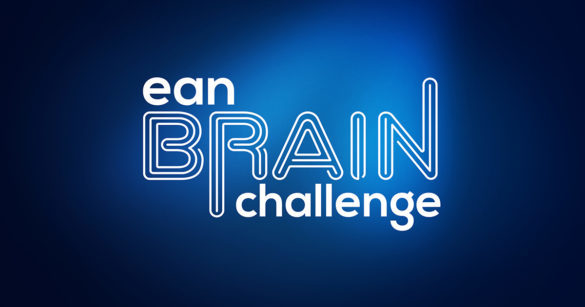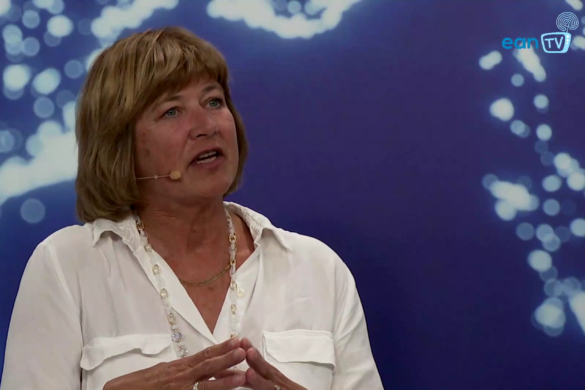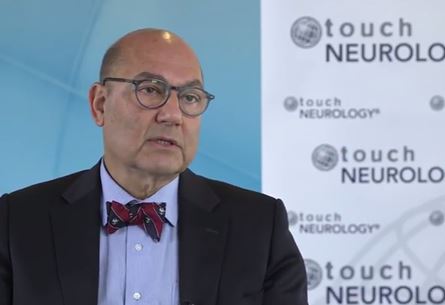by Federica Ferrari
This Special Session on ‘Pregnancy in women with neurological diseases’, chaired by Prof. Mark Edwards and organised by the co-editors of the European Journal of Neurology, discussed one of the hot topics in neurology management for one of the most special patient populations. In fact, there are many common questions raised by pregnant patients to the neurologist, and providing information and support is fundamental. In this session some of these questions were addressed.
The session began with a presentation by Prof. Andrew Chan from Bern, Switzerland, focusing on Multiple Sclerosis (MS). Although a high percentage of MS patients are women of childbearing age, he highlighted how few are actually prepared and educated about family planning. The majority of them did not even think having a family could be possible. Therefore, it is important for MS patients to be properly informed about the disease course and relapse risk before conception, during pregnancy and afterwards. In particular, Chan discussed the drawback balance in the mother and child for various disease modifying drugs, also introducing pharmacokinetic considerations for placenta barrier crossing and breastfeeding. In such a complex picture, interdisciplinary management is mandatory.
Next, Prof. Claudia Sommer from Würzburg, Germany, gave the audience a bird’s-eye view of the management of representative neuromuscular diseases during pregnancy. For Charcot-Marie-Tooth, she discussed the lack of consensus between national studies about post-partum bleeding and abnormal presentations, while agreement was found about the higher risk of disease exacerbation (above all for the CMT1A type) due to progesterone increase. Afterwards Sommer discussed Neuropathies in young women, particularly Guillan-Barré syndrome, showing the results from an updated case series where it was concluded that the disease jeopardises both the mother and foetal health. Other diseases discussed were spinal muscolar atrophy and myasthenia gravis, the latter being a common co-occurrence to pregnancy. Also in these diseases, a planning phase is necessary to reduce exacerbations to a minimum, to avoid potentially harmful treatments, and to best manage delivery and post-partum period.
Prof. Didier Leys from Lille, France, discussed firstly what is known about recurrence risk and treatment in ischaemic stroke pregnant patients, showing the results of some small national studies that allowed it to be defined that if a woman with a previous stroke becomes pregnant, her risk of recurrent stroke is increased. However, this is independent from the pregnancy in itself, but is due to the presence of serious pregnancy complications. In these cases, the major risk is above all upon the unborn child. Little information is available for intracerebral haemorrhage and cerebral venous thrombosis. Finally, Leys gave a summary of the current guidelines about management anticoagulants during pregnancy, underlining that new oral direct anticoagulants are not recommended because of the lack of data.
The session was concluded with the talk by Prof. Veerle De Herdt from Ghent, Belgium, with a focus on epilepsy. She discussed how fertility could be impaired in these patients because of the disease itself and for the employment of some anti-epileptic drugs active on sex hormone metabolism; this makes patient education and patient-neurologist dialogue important because safe contraceptive methods are available, and 65% of pregnancies in women with epilepsy are unplanned, exposing both women and unborn children to potentially harmful drawbacks. In particular, De Herdt pointed out that seizures in pregnancy determine higher death rates and major complications in women with epilepsy, making monitoring of plasma anti-epileptic concentrations fundamental. On the other hand, careful selection of anti-seizure drugs may prevent major congential malformations in the foetus, and cognitive and behavioural alterations in children. Data also supports the supplementation with folic acid both before and during pregnancy in women with epilepsy.
In summary, this session highlighted the central role of neurologists in the education of women with neurological diseases and in childbearing age. The health of mothers and children are at stake if proper management of these patients is not safeguarded, and this cannot be achieved without interdisciplinary dialogue with the other involved medical specialists and proper planning of pregnancy.













